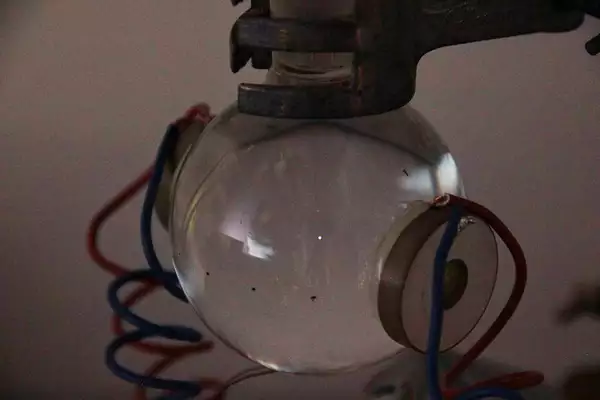Sonoluminescence, a phenomenon where bubbles in a liquid emit flashes of light when exposed to sound waves, has been the subject of extensive research and curiosity since its discovery.
About Sonoluminescence:
- Sonoluminescence is the emission of light from a bubble in a liquid when subjected to ultrasonic waves.
- It occurs when bubbles formed by cavitation (the formation of vapor cavities in a liquid) interact with powerful sound waves.
- It involves bubbles in a liquid emitting light when subjected to ultrasonic waves.
Discovery and Historical Context
- Discovered by German engineers in 1934 while studying sonar.
- Observed that small bubbles in a liquid, when hit by powerful sound waves, produce flashes of light.
Mechanism of Sonoluminescence
- Bubble Dynamics:
- Sound waves cause bubbles in the liquid to undergo rapid expansion and contraction.
- The alternating high– and low-pressure phases of sound waves create this effect.
- Temperature and Light Production:
- During bubble collapse, the temperature inside the bubble rises to several thousand kelvin.
- The intense heat causes gases within the bubble to ionize.
- This ionization results in the emission of light energy for a trillionth of a second.
Natural Phenomenon:
- Pistol shrimp create sonoluminescence by snapping their claws rapidly.
- This generates a jet of water creating a low-pressure bubble that collapses, producing a loud sound, intense heat, and occasionally a flash of light.
Ref: Source
| UPSC IAS Preparation Resources | |
| Current Affairs Analysis | Topperspedia |
| GS Shots | Simply Explained |
| Daily Flash Cards | Daily Quiz |
Frequently Asked Question:
What is sonoluminescence?
Sonoluminescence is the emission of light from bubbles in a liquid when exposed to sound waves.
How was sonoluminescence discovered?
Sonoluminescence was discovered by German engineers in 1934 while studying sonar technology.
What causes sonoluminescence to occur?
Sonoluminescence occurs when bubbles formed by cavitation interact with powerful sound waves.
What is the mechanism behind sonoluminescence?
The mechanism involves bubbles in a liquid undergoing rapid expansion and contraction due to sound waves.
Which factors contribute to the production of light in sonoluminescence?
Factors such as bubble dynamics, temperature changes, and the intensity of sound waves contribute to the production of light in sonoluminescence.



